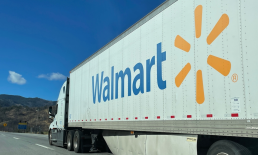Delivery-Reliant Consumers Protect Aggregators From Inflationary Trade-Down

As inflation has consumers reevaluating their food spending, aggregators benefit from increased expectations of convenience.
Jingyao Wu, chief operating officer of food delivery app HungryPanda, which specifically focuses on offering Chinese food and on meeting the needs of Chinese consumers living abroad, has seen customer frequency hold strong against pressures.
“So, in the pandemic, we saw customers’ monthly frequency increase dramatically from three orders per month to around eight orders per month within just a one or two months,” Wu said. “After the pandemic, the order frequency, according to our data, hasn’t decreased too much. It’s around eight as well. So, I think more and more customers are already reliant on the delivery service.”
Indeed, PYMNTS research shows that aggregators have remained popular. Data from the study “The ConnectedEconomy™ Monthly Report: The Rise of the Smart Home,” which drew from a survey of more than 2,600 U.S. consumers, found that 43% order food for same-day delivery from aggregators every month. Plus, more than half of those aggregator customers make purchases once a week or more.
Still, while a significant share consumers may be ordering from aggregators, they also have many aggregators to choose from, such that delivery services must remain highly competitive. HungryPanda, for its part, benefits from having carved out a specific niche.
Over the course of the early years of the pandemic, the company raised $220 million in total over several funding rounds to meet the delivery needs of its underpenetrated market. Since its 2016 founding in the United Kingdom, the company has expanded to a range of countries, including the United States, Australia, Japan and others, on the strength of its highly targeted offering.
Wu noted that Chinese restaurants feel more comfortable using the platform compared to mainstream aggregators because the language across the internal controls is more familiar to them. Additionally, the delivery platform benefits from increased efficiency because, across the 80 cities in which it operates, both the restaurants on the platform and the customers it serves tend to be “concentrating in certain areas in the city.”
“That makes our delivery efficiencies have a huge advantage, and also our food prices are higher than the other platforms, so that’s where our unit economics have more of an advantage in this market,” said Wu.
On the customer acquisition and retention side, the built-in audience is a huge help, given the difficulties of standing out amid the wide range of digital ordering options.
For instance, in an interview with PYMNTS, André Moraes, senior director of marketing at PepsiCo Foodservice and head of PepsiCo Foodservice’s Digital Lab, explained that, in getting to know the ghost kitchen space, the company has noticed a trend of scrolling fatigue.
“What we find many times is, scrolling through options of where to order from feels a lot like scrolling through what to watch,” Moraes said. “When you’re streaming something and when you’re ordering your meal, the experience tends to feel very similar. We’re accustomed to new content when we’re streaming content. We’re starting to find that consumers are really eager to find new options in dining.”



